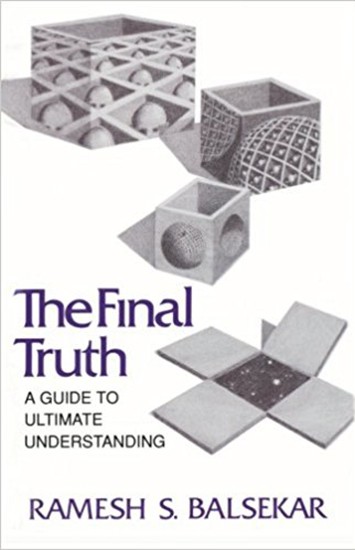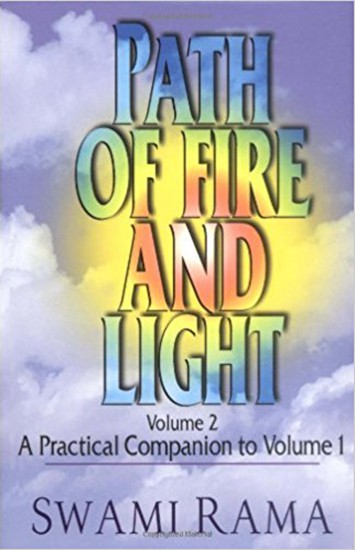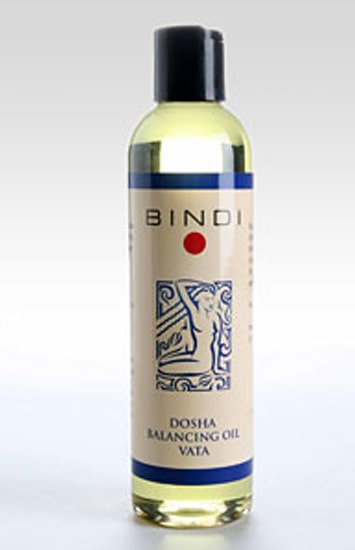-
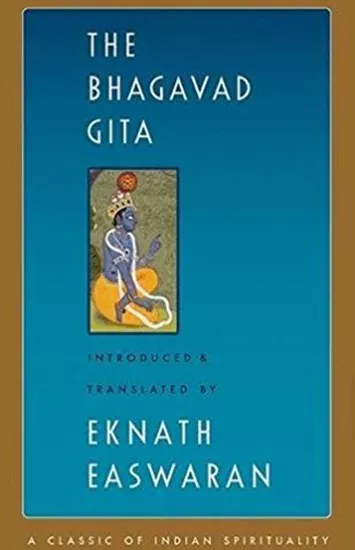 Vivid literature, lofty philosophy -- the Bhagavad Gita distills the finest in India's vast and varied culture On the morning of battle, facing Armageddon, prince Arjuna loses his nerve and refuses to fight. Krishna knows better: "Your very nature will drive you to fight. Your only choice is what to fight against." His advice gives an inspiring model of the man or woman of action -- the person who aims at goodness in a world of conflict and change. In this translation, the Gita stands out as a book of choices -- direct, practical, universal. The introduction sketches the background of the poem and gives clear, contemporary explanations of the basic ideas of Indian philosophy: karma, reincarnation, yoga, freedom. Separate chapter introductions outline the drama as it unfolds.In the Bhagavad Gita, Prince Arjuna asks direct, uncompromising questions of his spiritual guide on the eve of a great battle.In this best-selling and expanded edition of the most famous --and popular -- of Indian scriptures, Eknath Easwaran contextualizes the book culturally and historically and explains the key concepts of Hindu religious thought and the technical vocabulary of yoga. Chapter introductions, notes, and a glossary help readers understand the book's message. Most importantly, this translation uses simple, clear language to impart the poetry, universality, and timelessness of the Gita's teachings.
Vivid literature, lofty philosophy -- the Bhagavad Gita distills the finest in India's vast and varied culture On the morning of battle, facing Armageddon, prince Arjuna loses his nerve and refuses to fight. Krishna knows better: "Your very nature will drive you to fight. Your only choice is what to fight against." His advice gives an inspiring model of the man or woman of action -- the person who aims at goodness in a world of conflict and change. In this translation, the Gita stands out as a book of choices -- direct, practical, universal. The introduction sketches the background of the poem and gives clear, contemporary explanations of the basic ideas of Indian philosophy: karma, reincarnation, yoga, freedom. Separate chapter introductions outline the drama as it unfolds.In the Bhagavad Gita, Prince Arjuna asks direct, uncompromising questions of his spiritual guide on the eve of a great battle.In this best-selling and expanded edition of the most famous --and popular -- of Indian scriptures, Eknath Easwaran contextualizes the book culturally and historically and explains the key concepts of Hindu religious thought and the technical vocabulary of yoga. Chapter introductions, notes, and a glossary help readers understand the book's message. Most importantly, this translation uses simple, clear language to impart the poetry, universality, and timelessness of the Gita's teachings. -
 This book gives a glimpse and creates a provocative atmosphere for the intelligent and learned so that they will begin studying their inclination to follow a particular path, and so that they don't waste time and energy in the prevailing confusion of our times, but choose a definite path for themselves. The younger generation today is longing to seek something new and fresh, but it is torn by the conflicts created by guilt and fear. With these views in mind and to serve the needs of the aspirants and free-thinkers, I present this book.
This book gives a glimpse and creates a provocative atmosphere for the intelligent and learned so that they will begin studying their inclination to follow a particular path, and so that they don't waste time and energy in the prevailing confusion of our times, but choose a definite path for themselves. The younger generation today is longing to seek something new and fresh, but it is torn by the conflicts created by guilt and fear. With these views in mind and to serve the needs of the aspirants and free-thinkers, I present this book. -
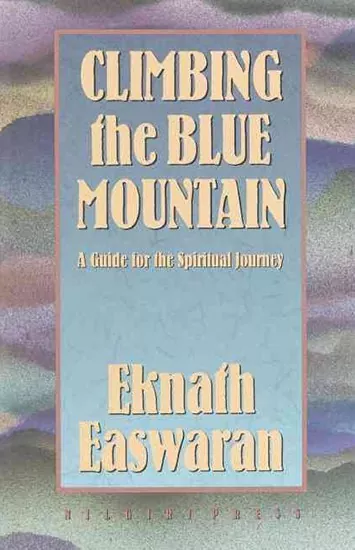 Sixteen lively essays illuminate different aspects of the spiritual journey. The introduction presents the author as a “travel agent” on a journey to the spiritual world within us. The essays are metaphorical travel brochures, invitations to take the plunge into self-discovery through the adventure of meditation. Edited from his extemporaneous talks, this inspiring collection of essays gives the flavor of hearing this great spiritual teacher and storyteller in person. Easwaran successfully combines his Eastern and Western wisdom, which includes a thorough knowledge of English literature, into an eight-point program usable by followers of all religious traditions.
Sixteen lively essays illuminate different aspects of the spiritual journey. The introduction presents the author as a “travel agent” on a journey to the spiritual world within us. The essays are metaphorical travel brochures, invitations to take the plunge into self-discovery through the adventure of meditation. Edited from his extemporaneous talks, this inspiring collection of essays gives the flavor of hearing this great spiritual teacher and storyteller in person. Easwaran successfully combines his Eastern and Western wisdom, which includes a thorough knowledge of English literature, into an eight-point program usable by followers of all religious traditions. -
 Swami Nijananda's Commentary on Trustful Surrender to Divine Providence Volume I, by Father Jean Baptiste Saint-Jure, is the first volume of lectures to be published. Many of his students felt these lectures were of value to them long after the lecture series ended. This volume explains and illuminates the essential message of Christianity. "In every circumstance, without exception," says Swami Nijananda, surrender to the Lord is the crucial thing...It is your task to harmonize yourself with what the Lord has ordained and not the other way around." This book provides the guidance to orient oneself spiritually in any situation the world presents, however tragic.
Swami Nijananda's Commentary on Trustful Surrender to Divine Providence Volume I, by Father Jean Baptiste Saint-Jure, is the first volume of lectures to be published. Many of his students felt these lectures were of value to them long after the lecture series ended. This volume explains and illuminates the essential message of Christianity. "In every circumstance, without exception," says Swami Nijananda, surrender to the Lord is the crucial thing...It is your task to harmonize yourself with what the Lord has ordained and not the other way around." This book provides the guidance to orient oneself spiritually in any situation the world presents, however tragic. -
 This second volume of Swami Nijananda's Commentary on Trustful Surrender to Divine Providence, is a reflection on the writings of Blessed Claude de la Colombiere, S.J.. This volume continues the discussion of the belief that "nothing happens to us in life unless God wills it so." Swami Nijananda leads an illustrious discussion of a process that turns stumbling blocks into stepping stones.
This second volume of Swami Nijananda's Commentary on Trustful Surrender to Divine Providence, is a reflection on the writings of Blessed Claude de la Colombiere, S.J.. This volume continues the discussion of the belief that "nothing happens to us in life unless God wills it so." Swami Nijananda leads an illustrious discussion of a process that turns stumbling blocks into stepping stones. -
 This is a practical book for people living in the world. The word "practical" implies that the teaching can be practiced in the world, in the midst of family, career and social obligations. No prior preparation is required for reading this book, and after reading this book, no further teaching is required. If one were to sincerely practice the teachings presented by Sri Swami Rama in this book, one will surely achieve the goal of self realization, a state described by Swamiji as the summum bonum of life, a state of bliss, a state of perfection.
This is a practical book for people living in the world. The word "practical" implies that the teaching can be practiced in the world, in the midst of family, career and social obligations. No prior preparation is required for reading this book, and after reading this book, no further teaching is required. If one were to sincerely practice the teachings presented by Sri Swami Rama in this book, one will surely achieve the goal of self realization, a state described by Swamiji as the summum bonum of life, a state of bliss, a state of perfection. -
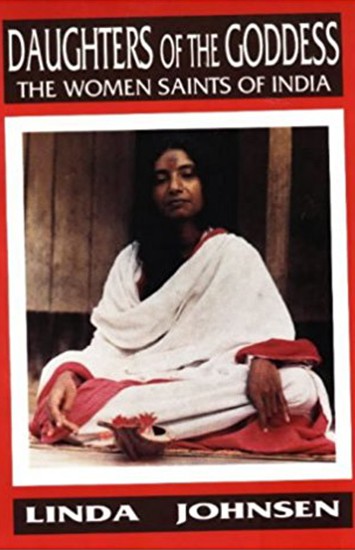 This book takes us along on a search for the feminine face of God. We travel with Linda Johnsen for a fascinating investigation of the great women saints of India who manifest the divine in their lives. Together with her we comb the scriptures, meet the holy ones, and are led, step by step, to sit in awe at the feet of six remarkable, contemporary women.
This book takes us along on a search for the feminine face of God. We travel with Linda Johnsen for a fascinating investigation of the great women saints of India who manifest the divine in their lives. Together with her we comb the scriptures, meet the holy ones, and are led, step by step, to sit in awe at the feet of six remarkable, contemporary women. -
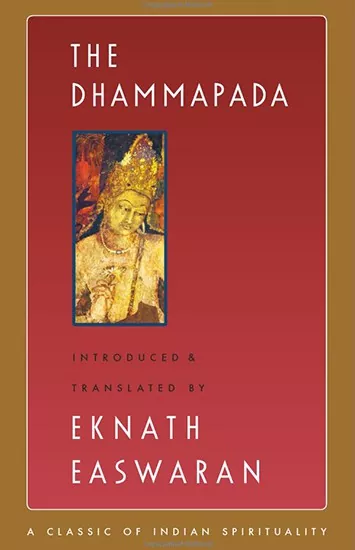 An English-language book originally published in 1986. It contains Easwaran's translation of the Dhammapada, a Buddhist scripture traditionally ascribed to the Buddha himself. The book also contains a substantial overall introduction of about 70 pages,[2] as well as introductory notes to each of the Dhammapada's 26 chapters.
An English-language book originally published in 1986. It contains Easwaran's translation of the Dhammapada, a Buddhist scripture traditionally ascribed to the Buddha himself. The book also contains a substantial overall introduction of about 70 pages,[2] as well as introductory notes to each of the Dhammapada's 26 chapters. -
Out of stock
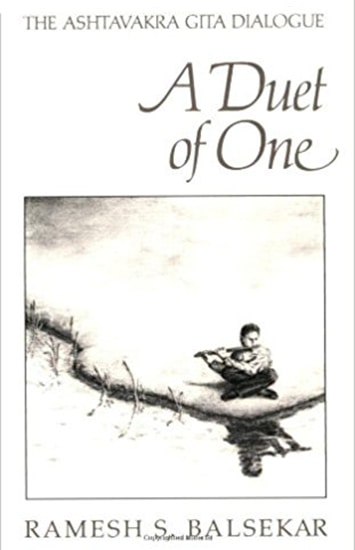 A Duet of One is a translation and interpretation of the most touchingly beautiful of all the Advaitic texts. It provides us with an illuminating and in-depth look at the nature of duality and dualism. In this book Ramesh reveals himself as a spiritual Master for the modern age. His insightful commentary unlocks the beauty and the mystery in this ancient text. He points us to the Understanding that is the true nature of us all.
A Duet of One is a translation and interpretation of the most touchingly beautiful of all the Advaitic texts. It provides us with an illuminating and in-depth look at the nature of duality and dualism. In this book Ramesh reveals himself as a spiritual Master for the modern age. His insightful commentary unlocks the beauty and the mystery in this ancient text. He points us to the Understanding that is the true nature of us all. -
 In this collection of first-person accounts, doctor and author Siegel (Love, Medicine, and Miracles) brings together almost three dozen cancer patients (or close relations of) to share their stories and the lessons they've learned. Many entries tackle the moment of diagnosis (the first, from survivor Angela Passidomo Trafford, opens with the line, "How many times do I have to have cancer?!"), while others pick up at the moment the diagnosis first hits home; still others focus on the end, like Ann Martin Bowler, whose sick brother passed days after a reinvigorating near-death experience. Lynn Zeller contributes a list of the "eight practices" she discovered through cancer that have led to a "wonderfully expanded experience of life" (including a focus on gratitude, mindfulness, and the idea that the universe "is in a conspiracy for my good"); Edwina Ford focuses on her afflicted husband's admiration, and efforts on behalf, of Lance Armstrong's post-surgery Tour de France comeback. For each piece, Siegel provides a reflection and a moral ("Life's difficulties are what teach us to grow") that clarify and encourage. Anyone struggling with cancer will find many relatable voices and, in Siegel, a compassionate expert commentator.
In this collection of first-person accounts, doctor and author Siegel (Love, Medicine, and Miracles) brings together almost three dozen cancer patients (or close relations of) to share their stories and the lessons they've learned. Many entries tackle the moment of diagnosis (the first, from survivor Angela Passidomo Trafford, opens with the line, "How many times do I have to have cancer?!"), while others pick up at the moment the diagnosis first hits home; still others focus on the end, like Ann Martin Bowler, whose sick brother passed days after a reinvigorating near-death experience. Lynn Zeller contributes a list of the "eight practices" she discovered through cancer that have led to a "wonderfully expanded experience of life" (including a focus on gratitude, mindfulness, and the idea that the universe "is in a conspiracy for my good"); Edwina Ford focuses on her afflicted husband's admiration, and efforts on behalf, of Lance Armstrong's post-surgery Tour de France comeback. For each piece, Siegel provides a reflection and a moral ("Life's difficulties are what teach us to grow") that clarify and encourage. Anyone struggling with cancer will find many relatable voices and, in Siegel, a compassionate expert commentator. -
 A daily guide and reminder of who we are, where we have come from and what our purpose in life is. The calendar includess 366 exquisite full color photographs that echo the divine nature of Swamiji's inspiring sayings gathered from his many books and lectures. Convenient, portable size and self standing spiral frame to fit easily on your desktop or table.
A daily guide and reminder of who we are, where we have come from and what our purpose in life is. The calendar includess 366 exquisite full color photographs that echo the divine nature of Swamiji's inspiring sayings gathered from his many books and lectures. Convenient, portable size and self standing spiral frame to fit easily on your desktop or table. -
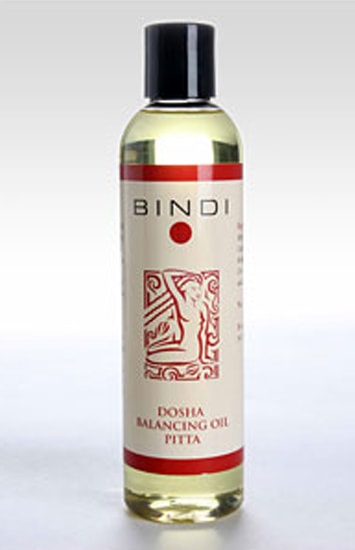 Description: To Soothe and Cool: Pure Oils, Ayuvedic Herbs, Plant and Flower Extracts gently soothe sensitive skin. Aids in cooling body temperature and powerful therapeutic aromas help to comfort. Ingredients/Includes: Ingredients: Sweet Almond Oil, Sunflower Oil, Camomile, Rose, Vetivert, Brahmi, Nagarmotta. No Chemicals or Preservatives are added. Instructions: Directions: Use as a massage oil in bath water to soften skin or after bath or shower as an all-over moisturizer to protect the skin. Can be used on the face to massage pressure points.
Description: To Soothe and Cool: Pure Oils, Ayuvedic Herbs, Plant and Flower Extracts gently soothe sensitive skin. Aids in cooling body temperature and powerful therapeutic aromas help to comfort. Ingredients/Includes: Ingredients: Sweet Almond Oil, Sunflower Oil, Camomile, Rose, Vetivert, Brahmi, Nagarmotta. No Chemicals or Preservatives are added. Instructions: Directions: Use as a massage oil in bath water to soften skin or after bath or shower as an all-over moisturizer to protect the skin. Can be used on the face to massage pressure points. -
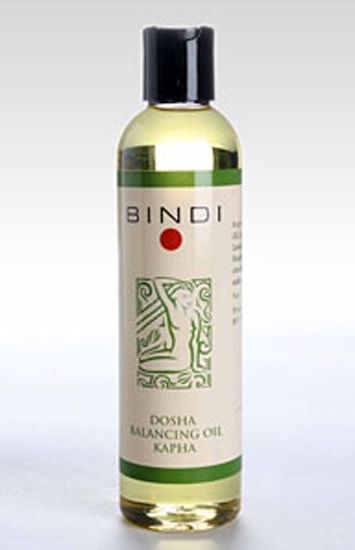 Directions: Use as a massage oil in bath water to soften skin or after bath or shower as an all-over moisturizer to protect the skin. Can be used on the face to massage pressure points. Ingredients: Sweet Almond Oil Safflower Oil Clove Lavender Sage Basil Brahmi Shatavari Ashwagandha. No chemicals or preservatives are added. Supplemental Facts: To Energize and Warm: Pure Oils Ayurvedic Herbs Plant and Delicate Flower Extracts stimulate lackluster temperaments without irritation. Aids in warming body temperatures and powerful therapeutic aromas help to energize.
Directions: Use as a massage oil in bath water to soften skin or after bath or shower as an all-over moisturizer to protect the skin. Can be used on the face to massage pressure points. Ingredients: Sweet Almond Oil Safflower Oil Clove Lavender Sage Basil Brahmi Shatavari Ashwagandha. No chemicals or preservatives are added. Supplemental Facts: To Energize and Warm: Pure Oils Ayurvedic Herbs Plant and Delicate Flower Extracts stimulate lackluster temperaments without irritation. Aids in warming body temperatures and powerful therapeutic aromas help to energize. -
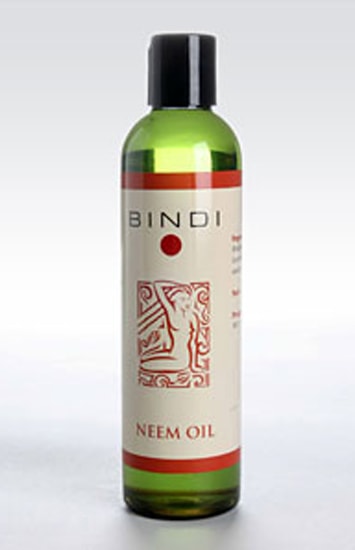 A natural moisturizer. Has a magical effect on chronic skin conditions. Its antiseptic and analgestic properties help to heal wounds, psoriasis, dandruff, acne and eczema. Apply a few drops of Neem Oil on the affected areas. Contains neem, Brahmi, Basil, Camphor and essential oil of Sandalwood and Rose. 8 Oz.
A natural moisturizer. Has a magical effect on chronic skin conditions. Its antiseptic and analgestic properties help to heal wounds, psoriasis, dandruff, acne and eczema. Apply a few drops of Neem Oil on the affected areas. Contains neem, Brahmi, Basil, Camphor and essential oil of Sandalwood and Rose. 8 Oz. -
 For the cleansing and moisturizing of nasal passage according to the traditional practice of Neti
For the cleansing and moisturizing of nasal passage according to the traditional practice of Neti- Clear the nasal passages
- Remove excess mucus
- Reduce dust and pollen by cleansing nasal passage
- Relieve nasal dryness
- Heavy-duty construction dishwasher safe
-

Contains 50 Remedies 1/2 Dram Vials: Aconitum Napellus Allium Cepa Antimonium Tartaricum Apis Mellifica Argentum Nitricum Arnica Montana Arsenicum Album Belladonna Bryonia Alba Calcarea Carbonica Calcarea Phosphorica Calendula Officinalis Cantharis Carbo Vegetabilis Caulophyllum Thalictroides Causticum Chamomilla Cinchona Officinalis Cocculus Indicus Coffea Cruda colocynthis Euphrasia Officinalis Ferrum Phosphoricum Gelsemium Sempervirens Glonoinum Hepar Sulphuris Calcareum Hypericum Perforatum Ignatia Amara Ipecacuanha kali Bichromicum Lachesis Mutus Ledum Palustre Lycopodium Clavatum Magnesia Phosphorica Mercurius Vivus Natrum Muriaticum Nux Vomica Phosphorus Phytolacca Decandra Pulsatilla pyrogenium Rhus Toxicodendron Ruta Graveolens Sepia Silicea Spongia Tosta Staphysagria Sulphur Symphytum Officinale Thuja Occ




